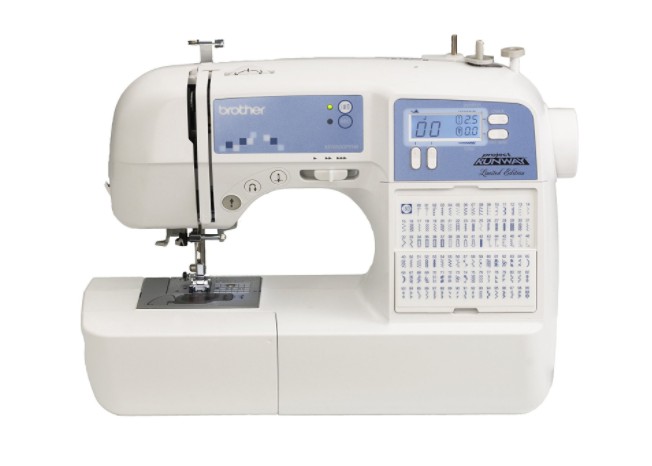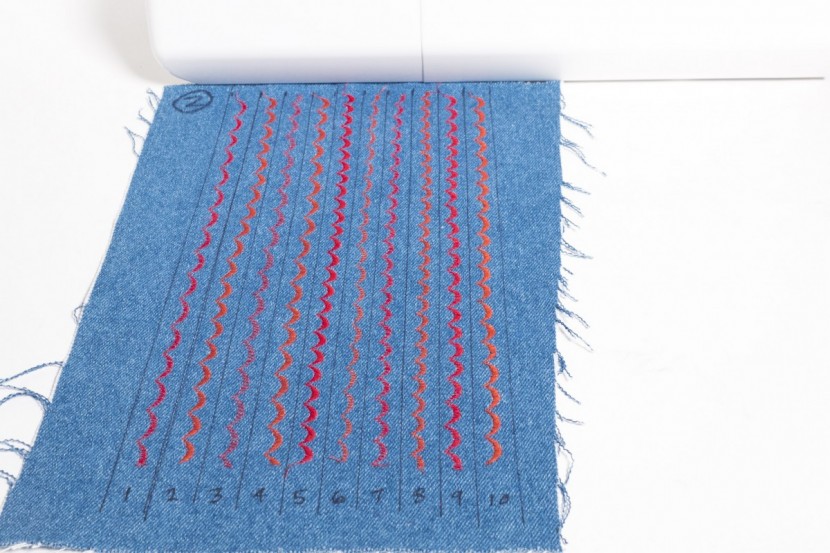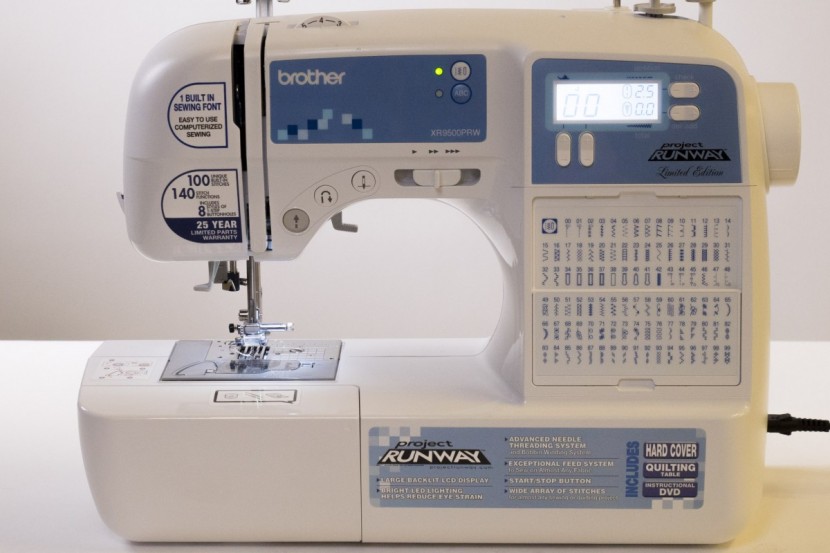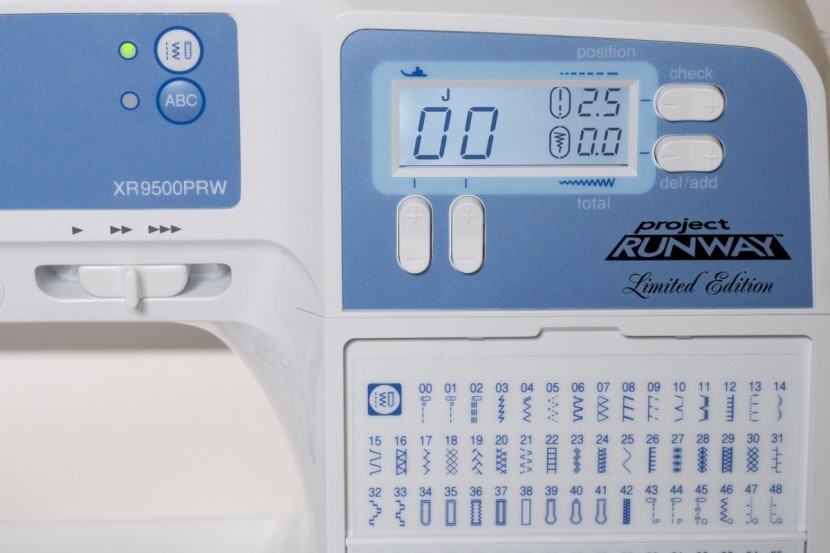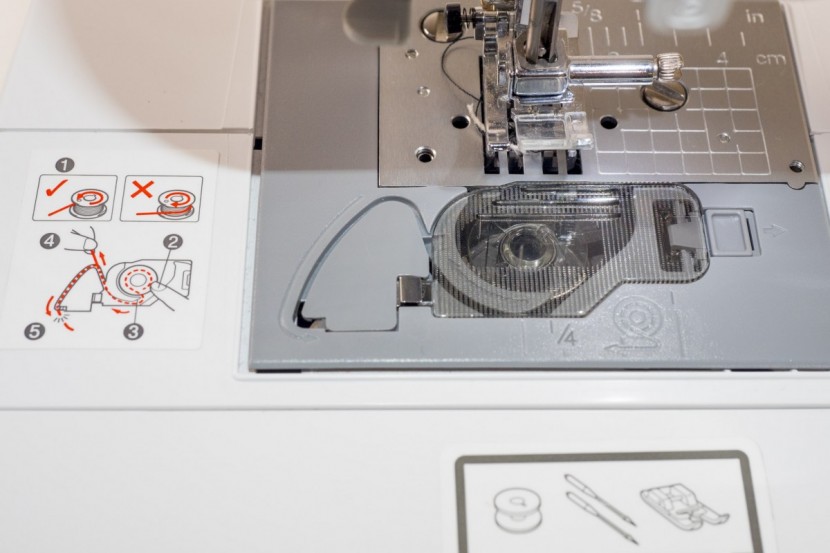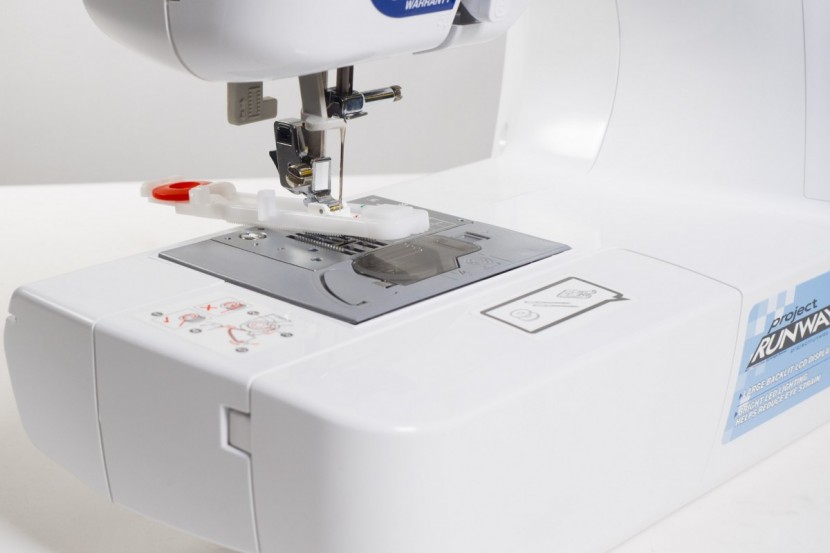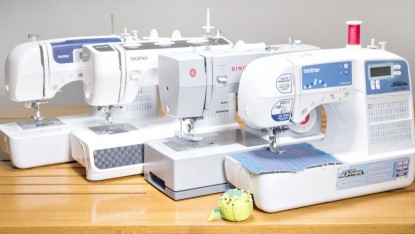Brother XR9500PRW Review
Our Verdict
Our Analysis and Test Results
Thoroughly surprising us, the economically priced Brother XR9500PRW earned the third-highest score of the entire group, holding its own with other products that cost substantially more.
Sewing
While the sewing performance of the XR9500PRW was not the standout one, this sewing machine proved to be more than capable enough to handle a myriad of different test fabrics with a wide variety of stitches. After testing each machine, we narrowed down our testing process to evaluate each machine at attaching a zipper, and performing 3 stitches: zigzag, scallop, and a long straight. We found that these stitches did the best at demonstrating each machine's performance and clearly differentiating them
The XR9500PRW did well with the long straight stitch on satin and jersey knit fabrics, but did struggle slightly with denim and polyester charmeuse. The bobbin thread seemed to be a little loose on the former, and bunched up the fabric on the former. The scallop stitch performance on this model was varied, excelling at denim and cotton, but falling short on felt and upholstery. We also noticed the stitch failed on jersey knit, or woven cotton fabric periodically.
The zigzag stitch was fantastic on jersey knit, and was executed well on charmeuse and corduroy — by far the best performer on the charmeuse. While this model did struggle a little with the silk and the chiffon, the majority of machines did as well on these more difficult fabrics. This product did a good job at attaching the zipper with its zipper presser foot, easily clearing all parts of the zipper and not hanging up on the hard stop.
Ease of Use
For a product primarily designed with the intention of making your project easier, being easy to use is of almost paramount importance. The Brother XR9500PRW did exceptionally well in this category, earning an 8 out of 10 and tying for the top score out of all the products that we tested. We looked at how clear and easy it was to understand the directions that were printed on the machine, whether or not the worklight was sufficient, the type of thread cutter, selecting stitches, and if there were automatic features.
This machine had clear and understandable directions printed on it for every possible adjustment, except the thread tension. The bobbin threading directions are printed on a sticker, allowing more advanced users to remove them when they feel more comfortable with the machine. Stitch selection is done through the arrow keys to input a number on the screen to match the corresponding key printed on the machine.
Two convenient features that his machine had were the presence of a backlit display — something that other machines lacked — as well as on-screen recommendations for which presser foot worked the best with each stitch.
The worklight on this machine was a little dim, and cast an annoying shadow across the work, meaning supplemental lighting is probably a must.
The XR9500PRW has a manual thread cutter located on the side of the machine. For even more convenience, this machine has automatic sewing to help ensure decorative stitched come out looking just perfect, and the needle will always stop in the down position. This helps ensure that you never forget to drop the needle when raising the presser foot, keeping your work in the same place while pivoting.
Ease of Setup
Finding a pattern, preparing your fabric, setting up your workspace — sometimes the setup process for sewing can be more time-consuming than actually sewing it. We rated each machine on how long it took to set up, focusing on threading the machine and the bobbin, swapping presser feet, threading the needle and winding the bobbin. The XR9500PRW did exceptionally well in this category, earning the top score with a 7 out of 10.
Threading the machine was normal, essentially what you would expect in terms of difficulty. There were no hard to catch thread guides or spots to hang up on. This machine had the typical needle threader — which can be a little bit difficult to use, but is still easier than threading the needle manually.
We found that it was easy to remove the bobbin cover plate and install the bobbin, with clear threading directions that were easy to execute.
Winding the bobbin was easy enough, but the XR9500PRW did seem to wind them bottom heavy.
Button work
The last rating metric that we used to assess sewing machine performance was button work, or making and aligning buttonholes. Button work made up the lowest weight of the overall score — only 10% — but it is still an important aspect of sewing. The XR9500PRW didn't deliver a stunning performance, but still performed above average, with a 6 out of 10.
This machine has a 1-step automatic buttonhole feature, using a specialized presser foot. Scores for this category were determined by the ease of setting up the machine to sew a buttonhole, aligning it in the desired spot and the quality of the finished product. It was a little difficult to use the marks on the presser foot to line up the buttonhole perfectly, but still doable. However, we did really like that this machine seems to reinforce the buttonhole much better than the majority of the other machines that we tested. Setting up the buttonhole process on this machine was relatively similar to the others — not too difficult.
Value
The Brother XR9500PRW offers a fantastic value, performing extremely well for a budget price tag. This sewing machine held its own with products that have list prices upwards of a hundred of a hundred dollars or more higher.
Conclusion
The Brother XR9500PRW is a great, low-cost sewing machine that performs like a top-of-the-line model. This machine would be a fantastic choice for someone who is new to sewing, and wants a machine that will handle anything they throw at it, and is capable of completing a myriad of projects. We feel fully confident recommending this machine for both the beginner, as well as for the advanced user looking for a budget option.


